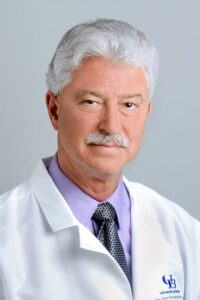- Retina Research Foundation
- About RRF
- Pilot Study Grants
- Grant Recipients 2024
- Samuel M. Wu, PhD
- Yingbin Fu, PhD
- Rui Chen, PhD
- Graeme Mardon, PhD
- Richard L. Hurwitz, MD
- Lih Kuo, PhD
- Wenbo Zhang, PhD
- Curtis Brandt, PhD
- Timothy Corson, PhD
- Jianhai Du, PhD
- Francesco Giorgianni, PhD
- James Monaghan, PhD
- Milam Brantley, MD, PhD
- Seongjin Seo, PhD
- Vladimir Kefalov, PhD
- Andrius Kazlauskas, PhD
- Erika D. Eggers, PhD
- Ann C. Morris, PhD
- Ming Zhang, MD, PhD
- Christine Sorenson, PhD
- Alex J. Smith, PhD
- Jeffrey M. Gross, PhD
- David M. Wu, MD, PhD
- Kinga Bujakowska, PhD
- Eric Weh, PhD
- Ching-Kang Jason Chen, PhD
- Jakub K. Famulski, PhD
- Thanh Hoang, PhD
- Georgia Zarkada, MD, PhD
- Eleftherios Paschalis Ilios, PhD
- Publications
- Grant Guidelines and Information
- Grant Application
- Grant Recipients 2024
- Research Programs
- Contact Us
- Giving
- RRF History
- Home
RRF Kayser International Award
Presented by International Society for Eye Research (ISER)
Made possible by a gift to RRF in honor of Paul Kayser, the RRF Paul Kayser International Award in Retina Research was first presented in 1986. This international award recognizes lifetime achievement by a vision scientist who has made a significant contribution to the understanding of vitreoretinal diseases or disorders. This $50,000 award is given every two years.
2022 Award Recipient
Steven J. Fliesler, PhD, FARVO
Distinguished Professor, SUNY and the Meyer H. Riwchun Endowed Chair Professor of Ophthalmology, and Vice-Chair/Director of Research in the Department of Ophthalmology, Jacobs School of Medicine and Biomedical Sciences, of the State University of New York (SUNY)- University at Buffalo (UB)
Dr. Fliesler will receive his award and present a lecture at the XXV Biennial Meeting of the International Society for Eye Research (ISER), in Queensland, Australia in February 2023.
Education, Career Achievements, and Research Interests
Dr. Fliesler obtained a PhD in Biochemistry from Rice University, did a postdoctoral fellowship at the Cullen Eye Institute/Baylor College of Medicine, and was previously on the faculties of Baylor College of Medicine, Bascom Palmer Eye Institute/University of Miami School of Medicine, and Saint Louis University School of Medicine prior to joining the UB faculty in 2008. Dr. Fliesler holds concurrent appointments as a professor in the Department of Biochemistry and in the Neuroscience Graduate Program at UB, as well as being a Research Career Scientist at the Buffalo VA Medical Center (VA Western NY Healthcare System). His research is focused on inborn errors of cholesterol and isoprenoid metabolism and their impact on the development, structure and function of the retina, as well as on blast injury to the eye. He has published more than 150 peer-reviewed journal articles, book chapters and review articles, and is the editor of two books. His research program has been funded continuously for nearly 40 years by federal and private extramural grants.
Dr. Fliesler is the Editor-in-Chief of Experimental Eye Research, the Deputy Editor-in-Chief of Eye and Vision, an Associate Editor for Frontiers in Cell and Developmental Biology, and serves on four other journal editorial boards, including Molecular Vision and the Journal of Lipid Research. He has received multiple honors and awards, including a James S. Adams Scholar Award and a Senior Scientist Award from Research to Prevent Blindness, Silver-tier (2009) and Gold-tier (2014) Fellow of ARVO (FARVO), a SUNY Chancellor’s Award for Excellence in Scholarship and Creative Activities (2014), was designated a UB Distinguished Professor (2014-18), and was promoted to the rank of SUNY Distinguished Professor in 2018. He has given multiple named lectures and keynote presentations at universities and scientific meetings in the U.S. and abroad. He has served as Councilor for North America, Treasurer, and President of the International Society for Eye Research (ISER). For ARVO, he has formerly served as: Chair of the Publications Committee, a member of the Annual Meeting Program Committee (AMPC) and the Board of Trustees (representing the Retinal Cell Biology Section), and President. He currently serves as Vice-chair of the SUNY Distinguished Academy Board as well as the Chair of the Ludwig von Sallmann Prize Committee.
2020 Award Recipient
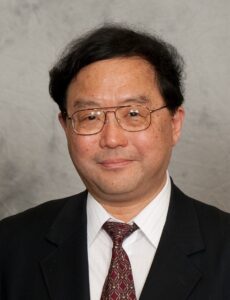
Samuel M. Wu, PhD
Professor of Ophthalmology, Neuroscience, and Molecular Physiology and Biophysics,
The Camille and Raymond Hankamer Chair in Ophthalmology, Cullen Eye Institute
Baylor College of Medicine, Houston, Texas
Lecture presented at ISER 2020 Award Winners Webinar, Tuesday, December 15, 2020
Title of Lecture
A2 Amacrine Cell-mediated Signaling Pathways in Healthy and Diseased Mammalian Retinas
Education, Career Achievements, and Research Interests
Samuel Miao-Sin Wu was born in Beijing, China, and grew up in Hong Kong. He received a B.A. degree in Physics and Biophysics from University of California, Berkeley in 1973 and a Ph.D in Biophysics from Harvard University in 1979. After a 3-year postdoctoral training in Neurobiology at UC Berkeley, he joined the faculty of Baylor College of Medicine, Houston, Texas in 1982, where he is currently a Professor of Ophthalmology, Neuroscience, and Molecular Physiology and Biophysics, and the Camille and Raymond Hankamer Chair in Ophthalmology. Professor Wu’s research concerns detailed molecular and synaptic mechanisms underlying retinal function and eye diseases. His lab pioneers investigations on rod and cone photoreceptor interactions and parallel information pathways in the retina. His team has made discoveries on how individual ion channels, receptors, synapses and gene products mediate retinal function in normal animals and dysfunction in mouse models for eye diseases such as retinitis pigmentosa, glaucoma and Bardet Biedl Syndrome.
Professor Wu has received many honors and awards, including the Sam and Bertha Brochstein Award (1987), the Marjorie W. Margolin Prize (1991), and James M. Barr Award (1998) from the Retina Research Foundation; the Dolly Green Scholars Award (1989) and Senior Scientific Investigators Award (1997) from Research to Prevent Blindness, Inc; the Boycott Prize (2006) from FASEB Summer Research Conference; the Ludwig von Sallmann Prize (2008) from the International Society for Eye Research; the Friedenward Award (2009) from the Association for Research in Vision and Ophthalmology and the Alcon Research Award (2011) from the Alcon Research Institute.
2018 Award Recipient
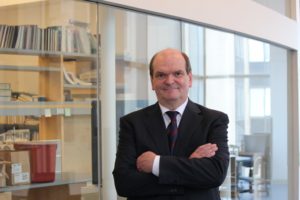
Krzysztof Palczewski, PhD
Chair, Department of Pharmacology
Case Western Reserve School of Medicine
Cleveland, Ohio
Award presented at ISER XXIII Biennial Meeting in Northern Ireland, UK
September 10, 2018
Title of Lecture
Chemistry and Biology of Vision
Education, Career Achievements, and Research Interests
Dr. Palczewski has made major scientific contributions to the biology and chemistry of vertebrate vision. He and his colleagues are especially renowned for first solving the crystal structures of inactive and photoactivated bovine rhodopsin, a prototype for G protein-coupled receptors (GPCRs) that comprise the largest most diverse family of human drug targets. Solving the crystal structure of retinoid isomerase, and discovering CaBP4, a regulator of synaptic function, constitute additional scientific breakthroughs. Use of advanced high-resolution molecular imaging techniques revealed toxic fluorophores that accumulate in retinal diseases and aging. Importantly, Palczewski has engineered mutated visual cycle proteins in transgenic animal models to understand their roles in vision and devise therapies for human retinopathies. One such advance implicated all-trans-retinal accumulation in retinas of mice with acute light-induced retinal dystrophy. Another mouse model mimicking human Stargardt’s disease and age-related macular degeneration responded favorably to retinylamine which slows the retinoid cycle. Finally, bypassing malfunctioning enzymes of the retinoid cycle, the artificial chromophore 9-cis-retinal partially restored vision in a transgenic mouse model and several patients with Leber’s congenital amaurosis.
2016 Award Recipient
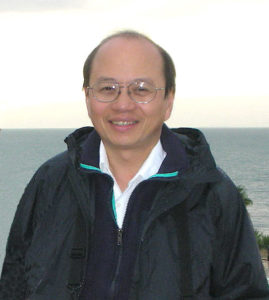
Professor of Neuroscience
Johns Hopkins University School of Medicine
Baltimore, MD
Award presented at ISER XXII Biennial Meeting, Tokyo, Japan, September 28, 2016
Title of Lecture
Melanopsin Signaling in the Eye
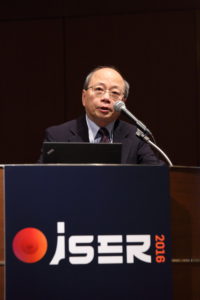
Dr. Yau
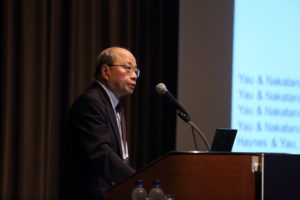
Education, Career Achievements, and Research Interests
King-Wai Yau was born in China and grew up in Hong Kong. After high school and a year of medical school there, he came to the US and received an A.B. in physics from Princeton (1971, University Scholar, Phi Beta Kappa, Sigma Xi) and a Ph.D. in neurobiology from Harvard (1975) under John Nicholls. He did postdoctoral work with Denis Baylor at Stanford, developing the suction-pipette-recording method that revolutionized the study of retinal rods and cones. He spent 1979-81 at Cambridge, England with Sir Alan Hodgkin, during which time he became intrigued by rod/cone phototransductions. In 1981, he moved to Department of Physiology and Biophysics at University of Texas Medical Branch at Galveston, where he contributed greatly to solving this problem. He rose to full professor in 1985, and, a year later, relocated to Johns Hopkins as Professor of Neuroscience and HHMI Investigator. At Hopkins, Yau investigated rod/cone phototransductions in ever greater detail. He also expanded over time into molecular biology, olfactory transduction, ion-channel molecular physiology, mouse genetics, intrinsically-photosensitive retinal ganglion cells, as well as retinal diseases and some translational work.
Yau received England’s Rank Prize in Optoelectronics (with Denis Baylor and Trevor Lamb) in 1980, Friedenwald Award from Association of Research in Vision and Ophthalmology (1993), Alcon Award in Eye Research twice (1994, 2005), Magnes Prize from Hebrew University of Jerusalem (1996), Balazs Prize from International Society for Eye Research (2006), Portugal’s Antonio Champalimaud Vision Award (with Jeremy Nathans) in 2008, CNIB Chanchlani Global Vision Award, Canada (2012), and the tri-yearly National Academy of Sciences Alexander Hollaender Award in Biophysics (2013). Yau is a member of National Academy of Scienes and a Fellow of American Academy of Arts and Sciences.
http://www.iser.org/prizes.html
Previous RRF Kayser International Award Recipients
2016 King-Wai Yau, PhD
2014 Robert E. Marc, PhD
2012 Robert E. Anderson, MD, PhD
2010 Frank Werblin, PhD
2008 John Dowling, PhD
2006 Dean Bok, PhD
2005 Judah Folkman, MD, and Gary W. Abrams, MD
2004 Gregory Acland, DMV, Gustavo Aquirre, DMV, Jean Bennett, PhD,
William Hausworth, PhD, Samuel Jacobson, MD, and Albert Maquire, MD
2003 Eugene deJuan, MD, and Wallace Founds, MD
2002 Dennis Davey, PhD
2001 Hilel Lewis, MD
2000 Debora Farber, PhD
1999 Tatsuo Hirose, MD, and Akitoshi Yoshida, MD
1998 Anita Hentrickson, PhD
1997 Jerry Shields, MD
1996 Akimichi Kaneko, MD
1995 Enrique Malbran, MD
1994 Alan C. Bird, MD
1993 Thaddeus Dryja, MD
1992 Alan M. Laties, MD
1991 John P. Sarks, FRCS, and Shirley H. Sarks, FRCS
1990 Neville N. Osborne, PhD,Dsc., and Berndt J. Ehinger, MD
1989 David Hubel, MD
1988 Denis Baylor, MD
1987 H. Gobind Khorana, PhD
1986 Shomi Bhattacharya, PhD, and Alan F. Wright

